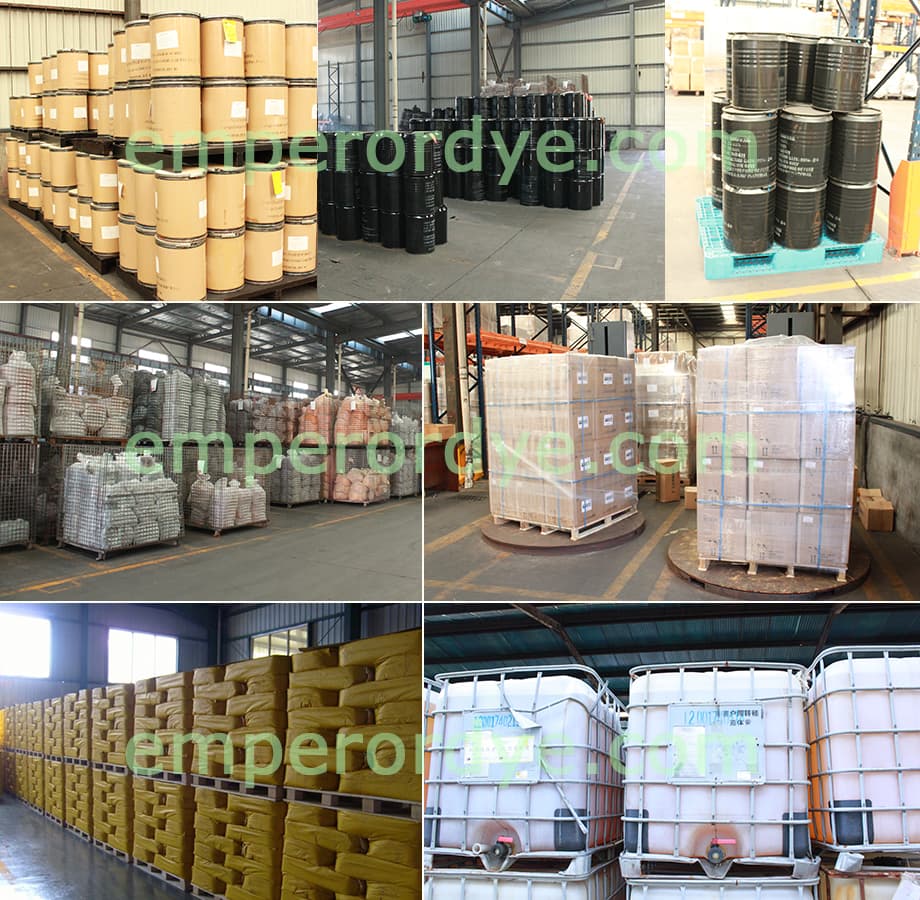Application and parameters of Direct Green 6
Direct Green 6
- TRADE NAME:
- Direct Green B
- Direct Dark Green B
- Cotton GreenB
- Direct Brilliant GreenC
- Direct Brilliant Green CBM
- Direct Green A
- Direct Green B
- Direct Green BG
- Direct Green BN
- Direct Green BP
- Direct GreenBX
- Direct Green MB
- Naphtamine Green B
- Nippon Green B
- OrbaminGreen B
- Phenamine Green BG
- Pheno Bright Green
CAS NO: 4335-09-5
CI.NO: 30295
Direct Green 6 Physical and Chemical properties
| Dyeing depth % | 2 |
| Insolubles % | 0.15 |
| Light Fastness | 2 |
| Washing Fatness | 2-3 |
| Rubbing fastness(dry) | 4 |
| Rubbing fastness(wet) | 3 |
Application Features
|
Solubility(g/L) |
SDC classification |
displacement(grade) |
metal ion effect(grade) |
discharge property(grade) |
other features |
||
|
copper |
iron |
neutral |
basic |
||||
|
— |
C |
3 |
1 |
4 |
5 |
4 |
— |
Colour Fastness Test
|
sun exposure |
soaping |
flooding |
perspiration |
rubbing |
ironing |
acid and alkali resistant |
|||||||
|
standard depth |
1/12 depth |
original colorchange |
white fiber stained |
original color change |
white fiber stained |
original color change |
white fiber stained |
dry |
wet |
sulfuric acid |
acetic acid |
soda ash |
|
|
— |
— |
3 |
1~2 |
4 |
3 |
4 |
3 |
4~5 |
2 |
4~5 |
4 |
1~2 |
1~2 |
Direct Green 6 alias direct dark green B, direct green. The appearance is generally dark gray uniform powder. Water soluble is still good, slightly sensitive to hard water. Soluble in water, dark green, soluble in acetone and cellosolve, slightly soluble in alcohol, insoluble In other organic solvents, it is purple-black in concentrated sulfuric acid, and turns purple-black to black after dilution; it is purple in concentrated hydrochloric acid or concentrated nitric acid; it does not dissolve in concentrated sodium hydroxide; it is dark green in concentrated ammonia water. The aqueous solution plus light sulphuric acid turns slightly blue, and the concentrated hydrochloric acid has a dark blue green precipitate, and the concentrated sodium hydroxide turns dark green to olive color. When both copper and iron ion light are turned dark.
Direct Green 6 Application:
Mainly used for cotton, hemp, such as glue of cellulose fiber dyeing, also used in cotton and viscose fabric dyeing and printing, also used for silk, polyamide fiber, stick/hair, sticky/ Kam fabric dyeing and printing. Can also be used in paper, soap, leather, regenerated celluloee fiber film shading, also used in the manufacture of color pigment sediment.
Use condition:
1. Used to dye cotton or viscose fiber to get dark yellow green. Good dyeing rate, poor transferability, slow temperature rise during dyeing and salt addition to control dyeing, can obtain uniform color. The stage dyeing solution should be naturally cooled to 80 ° C, which is beneficial to the dye exhaustion.
2.Used to dye wool, silk and nylon, dyed wool can be added with ammonium acetate to aid dyeing. Dyeing is generally done by padding, and ammonium tartrate is used as fixing agent. Cotton, viscose fiber and other fibers When bath dyeing, silk, wool and cotton and viscose fiber have the same depth, nylon can be dyed, polyester and acrylic are light yellow, and diacetate is slightly yellow.
3. Has also been used for direct printing of cotton or viscose fabrics, mainly for printing dark green, good dyeing performance for ground color discharge, and also for direct printing of silk, nylon and wool fabrics. And the color of the silk fabrics.
4. Used to be one of the main green direct dyes. It can be dyed with direct blue lake 5B, 6B and direct frozen yellow. Neutral dyeing bath should be used for direct green B dyeing. Neutral color should be used for printing. Pulp, such as using an alkaline dye bath or color paste, will make the shade dark
Precautions
Direct Green 6 can decompose benzidine, which is a banned dye. The substitute dye is direct dark green N-B .
Packing:

20 or 25kg/compound bag, carton box, iron drum, fiber durm for powder dye and 1000kg/tank for liquid dye
Direct Green 6 Material Safety Data Sheet (MSDS)
- Inquiry for Direct Green 6
- Question: *
- You can learn about other products:
- Direct Blue 6
- Direct Blue 15
- Direct Blue 71
- Direct Blue 86
- Direct Blue 106
- Direct Violet 12
- Direct Violet 9
- Direct Violet 1
- Direct Black 22
- Direct Black 19
Products Catalog
- solvent red 24
- solvent red 49
- solvent red 122
- solvent red 111
- solvent red 146
- solvent red 195
- solvent yellow 21
- solvent yellow 33
- solvent yellow 93
- solvent yellow 98
- solvent yellow 114
- solvent orange 60
- vat red 41
- solvent green 3
- solvent green 5
- solvent blue 70
- solvent blue 104
- solvent black 3
- solvent violet 31
- solvent violet 13
Copyright right HANGHZOU EMPEROR CHEMICAL CO,,LTD © 2019 All rights reserved.

 Pусский
Pусский